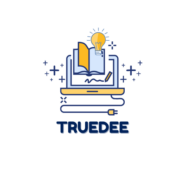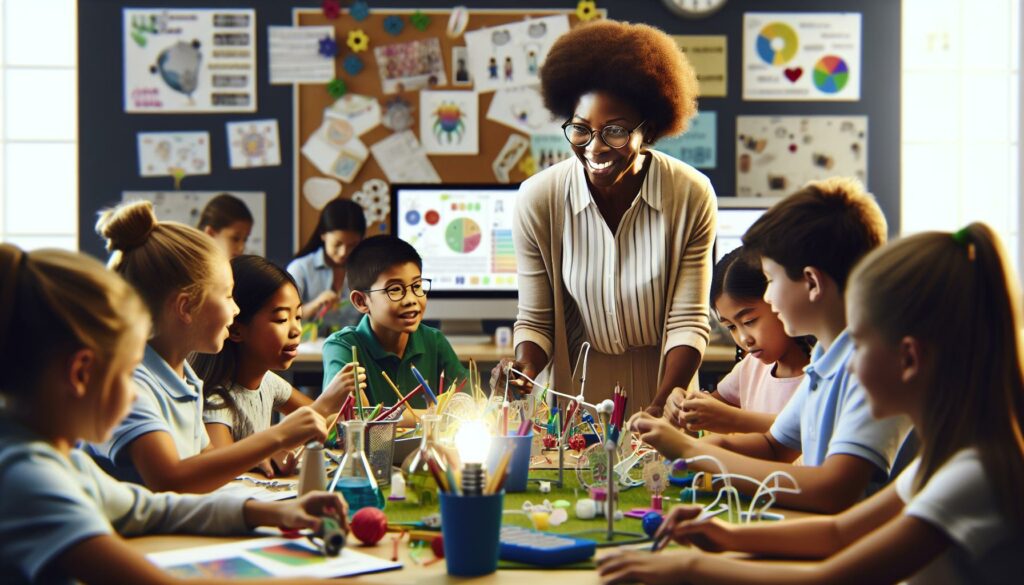Navigating the K-12 education landscape in Virginia can feel overwhelming, but it’s a journey worth taking. With a rich history and a commitment to academic excellence, Virginia’s schools offer diverse opportunities for students to thrive. From innovative teaching methods to a focus on STEM, the state’s education system is designed to prepare students for a rapidly changing world. As I explore the intricacies of K-12 education in Virginia, I’ll uncover the various programs, policies, and resources that shape the learning experience. Whether you’re a parent seeking the best options for your child or an educator looking to enhance your classroom, understanding these elements is crucial. Join me as we delve into what makes Virginia’s K-12 education unique and how it’s evolving to meet the needs of today’s learners.
- Diverse Educational Landscape: Virginia’s K-12 education system serves approximately 1.3 million students through a mix of public and private schools, emphasizing high academic standards and inclusivity.
- Key Funding Structure: Local governments provide about 50% of education funding, with significant contributions from state and federal sources, affecting resource allocation and educational quality across districts.
- Historical Evolution: The K-12 education framework in Virginia has undergone significant changes, particularly regarding desegregation and the establishment of academic benchmarks through milestones like the Standards of Learning (SOL) in 1995.
- Challenges of Equity: Disparities exist in educational access and resources, particularly in economically disadvantaged and rural areas, underscoring the need for targeted initiatives to close achievement gaps among student populations.
- Innovative Learning Approaches: Schools are increasingly integrating technology into the curriculum, promoting STEM education and personalized learning experiences, which are critical for preparing students for future careers.
- Support for Diverse Learners: Virginia’s K-12 education emphasizes supporting diverse student needs through specialized programs, individualized instruction, and culturally competent teaching practices.
K-12 Education in Virginia
K-12 education in Virginia covers kindergarten through 12th grade, serving approximately 1.3 million students across the state. Virginia’s education system prioritizes high academic standards and a comprehensive curriculum, ensuring well-rounded development for all students. The Virginia Department of Education oversees public schools, setting guidelines and standards aimed at fostering educational excellence.
Funding for K-12 education in Virginia comes from local, state, and federal sources. Local governments contribute about 50% of the funding, while the state provides around 30%, and federal funding constitutes the remaining 20%. This funding structure supports various programs focused on special education, English language learners, and other targeted initiatives.
Virginia’s public school system includes over 1,800 schools categorized into school divisions, reflecting the diverse needs and demographics of the student population. Numerous charter schools and magnet programs offer alternative educational options, promoting innovation and specialized learning environments.
Virginia integrates integrated technology into its curriculum, emphasizing STEM education through hands-on learning experiences. Through partnerships with local businesses and higher education institutions, schools provide students with real-world applications of their studies.
Parental involvement plays a crucial role in Virginia’s K-12 education system. Schools encourage engagement through regular communication, volunteer opportunities, and active participation in School Boards. This collaborative approach supports student achievement and fosters community connections.
Virginia’s commitment to education emphasizes equity and inclusivity. The state implements initiatives designed to address achievement gaps among various student groups, ensuring all students have access to quality education. The continuous assessment and improvement of educational policies and practices reflect Virginia’s dedication to meeting the evolving needs of today’s learners.
Historical Context
Virginia’s K-12 education system has deep roots, shaped by historical events and legislative changes. Understanding its evolution reveals the commitment to fostering academic excellence and equity.
Evolution of K-12 Education
K-12 education in Virginia has evolved significantly since its inception in the early 19th century. The state’s first public schools emerged in 1870, primarily serving white students. The early 20th century saw the introduction of mandatory school attendance laws, which increased enrollment numbers.
The mid-20th century marked a pivotal moment with the landmark Brown v. Board of Education decision in 1954, which mandated the desegregation of schools. This led to the gradual integration of students of all races and an increased focus on equitable education.
In the late 20th century, Virginia adopted the Standards of Learning (SOL) in 1995, establishing clear benchmarks for student achievement. This initiative aimed to enhance the quality of education across the state, focusing on core subjects like math, science, and reading.
Key Legislation Impacting Education
Several key legislations have significantly influenced Virginia’s K-12 education landscape. The Elementary and Secondary Education Act (ESEA) of 1965 aimed to close achievement gaps by providing additional resources to low-income schools.
In 1997, the Individuals with Disabilities Education Act (IDEA) ensured students with disabilities received a free appropriate public education, promoting inclusivity within schools. The No Child Left Behind Act (NCLB) of 2001 further emphasized accountability and standardized testing, impacting how schools approach education.
Recent initiatives, such as the Every Student Succeeds Act (ESSA) in 2015, shifted more authority to states, allowing Virginia to tailor its educational strategies. These legislative measures collectively contribute to shaping a robust educational framework, addressing the diverse needs of Virginia’s student population.
Current Structure of K-12 Education
Virginia’s K-12 education system comprises both public and private schools, each contributing uniquely to student development. Understanding the distinctions between these school types provides insight into the educational landscape.
Public vs. Private Schools
Public schools serve the majority of K-12 students in Virginia, offering tuition-free education funded primarily through state and local taxes. Virginia’s public school system includes over 1,200 school divisions, accommodating approximately 1.3 million students. Public schools follow guidelines set by the Virginia Department of Education, emphasizing academic standards and state testing.
Private schools, on the other hand, operate independently and charge tuition. These schools serve diverse educational philosophies, including religious education, Montessori, and International Baccalaureate programs. While private schools may maintain greater flexibility in curricular choices, they often experience significantly lower enrollment numbers compared to public schools.
Role of Local vs. State Government
The local government plays a crucial role in K-12 education funding and governance in Virginia, contributing about 50% of the total educational budget. Local school boards make decisions regarding school operations, budgets, and staff employment, ensuring that educational policies align with the community’s needs.
The state government, through the Virginia Department of Education, establishes overarching policies and standards to promote academic excellence. State funding, alongside federal support, complements local contributions, creating a comprehensive funding model. State initiatives, including the Standards of Learning (SOL) assessments, ensure accountability and maintain educational quality across public schools.
Challenges Facing K-12 Education in Virginia
K-12 education in Virginia faces several challenges that impact its effectiveness and accessibility. These challenges include funding issues and concerns related to access and equity.
Funding Issues
Funding issues significantly affect the quality of K-12 education in Virginia. Local governments contribute about 50% of the funding, leading to disparities among districts, particularly in economically disadvantaged areas. Some schools struggle with inadequate resources, outdated technology, and insufficient staff. In 2022, Virginia’s average per-pupil spending was approximately $13,400, which varies widely between districts due to local revenue differences. Over the years, state funding has faced cuts, affecting teacher salaries and essential programs, such as arts and extracurricular activities. These issues hinder academic performance and limit opportunities for students.
Access and Equity Concerns
Access and equity concerns remain central challenges in Virginia’s K-12 education system. While the state promotes initiatives to close achievement gaps, disparities persist among students based on socioeconomic status, race, and geographic location. For instance, rural areas often lack advanced placement courses and enrichment programs available in urban districts. The Virginia Department of Education reports that marginalized student groups continue to experience lower graduation rates and limited access to high-quality educational resources. Ensuring equitable funding and support services is crucial to providing all students with equal opportunities in accessing quality education and achieving academic success.
Innovative Programs and Solutions
Virginia’s K-12 education system embraces innovative programs and solutions that enhance learning experiences, preparing students for a rapidly changing world. Key areas of focus include technology integration and support for diverse learners.
Technology Integration in Classrooms
Technology integration in Virginia’s classrooms leads the way in modern education. Schools utilize tools like interactive whiteboards, tablets, and educational software to create engaging learning environments. Instructors harness online platforms for personalized learning, allowing students to progress at their own pace. For instance, the Virginia Department of Education promotes online courses that expand access to advanced subjects. The integration of coding and robotics into the curriculum prepares students for careers in tech-focused industries. Partnerships with local businesses provide resources and training for educators to effectively use these technologies. This hands-on approach ensures that students acquire vital 21st-century skills, equipping them for future challenges.
Support for Diverse Learners
Support for diverse learners is a priority in Virginia’s K-12 education landscape. Schools implement programs specifically designed to meet the unique needs of all students, including those with disabilities and English language learners. Specialized instruction, such as Individualized Education Programs (IEPs), accommodates varying learning styles and abilities. Professional development for teachers focuses on inclusive strategies, ensuring all educators are equipped to support diverse classrooms. Additionally, cultural competency training helps educators engage with students from different backgrounds effectively. Initiatives like the English Learner (EL) programs provide targeted language support, fostering english proficiency and academic success. Virginia’s commitment to equity translates into each student having the opportunity to thrive, regardless of their circumstances.
Virginia’s K-12 education system stands as a testament to the state’s dedication to fostering academic excellence and inclusivity. The innovative approaches and diverse opportunities available to students are impressive and reflect a commitment to preparing them for the future.
While challenges like funding disparities and access to quality resources remain, the ongoing efforts to address these issues are encouraging. As I explore the evolving landscape of education in Virginia, I’m inspired by the focus on equity and the integration of technology.
It’s clear that Virginia is not just looking to maintain its educational standards but is also striving to adapt and improve continuously. This commitment ensures that every student has the chance to succeed, making Virginia’s K-12 education system a model for others to follow.

